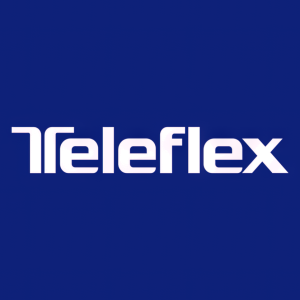Largest U.S. Healthcare Claims and Utilization Analysis for BPH Procedures Reveals Lowest Overall Complication Rates and Consistent Durability after Treatment with Minimally Invasive UroLift System
Rhea-AI Summary
Teleflex has revealed that the UroLift System yields the lowest overall complication rates among BPH treatments, based on the largest U.S. healthcare claims study presented at the European Association of Urology Congress. An analysis of over 33,000 claims showed a complication rate of 16.3% for the UroLift System at 300 days post-treatment, compared to 19.7% for TURP and 21.6% for GreenLight. The research emphasizes the UroLift System's durability with a low retreatment rate of 6.8% at 1,500 days, comparable to TURP. This data sets a new standard for evaluating minimally invasive BPH procedures.
Positive
- UroLift System shows the lowest overall complication rate at 16.3% at 300 days post-treatment.
- Durability evidenced by a low surgical retreatment rate of 6.8% at 1,500 days.
- Large-scale analysis provides a strong comparative measure for BPH treatments.
Negative
- None.
News Market Reaction 1 Alert
On the day this news was published, TFX gained 0.07%, reflecting a mild positive market reaction.
Data tracked by StockTitan Argus on the day of publication.
Real-World Claims Data Presented at Annual European Association of Urology Congress Reveal Overall Complication Rates are Lowest after Treatment with the UroLift System
WAYNE, Pa., July 09, 2021 (GLOBE NEWSWIRE) -- Teleflex Incorporated (NYSE:TFX) today announced that the largest U.S. healthcare claims and utilization analysis for benign prostatic hyperplasia (BPH) surgical and minimally invasive procedures reveals that overall complication rates are lowest after treatment with the UroLift® System. The research study titled “Analysis of Real-World Healthcare Data of Outcomes of Interventional Procedures in BPH”, which was sponsored by Teleflex, was presented by Dr. Steven Kaplan of Mount Sinai today at the 36th Annual European Association of Urology (EAU) Congress. Dr. Daniel Rukstalis+ of Prisma USC Division of Urology was a co-author of the study.
“Healthcare claims research takes a broad view of real-world treatment outcomes through the evaluation of measures that are typically outside the scope of clinical trial data, including financial and healthcare utilization data. Existing research in the area of surgical or minimally invasive procedures for BPH is sparse,” said Daniel Rukstalis, M.D. “We found the UroLift System had the lowest overall rate of complications at 300 days post-treatment.”
A retrospective observational analysis was performed on a representative sample of U.S. Medicare and commercial medical claims obtained from IBM Watson. The analysis included 18,794 transurethral resection of the prostate (TURP) patients, 9,894 GreenLight patients, 4,639 UroLift System patients and 780 Rezūm patients in the database.
Key findings of the study include:
- At 300 days post-treatment, the UroLift System demonstrated the lowest incidence of overall complications (defined as a post-operative procedure performed during a return visit to an outpatient setting):
16.3% for the UroLift System;19.7% for TURP;21.6% for GreenLight; and23.0% for Rezūm. - Among the most commonly reported complications were those associated with catheterization, stone removal, and cystoscopy.
- At 1,500 days post-treatment, the UroLift System demonstrated consistent durability, with a low surgical retreatment rate for return of symptoms of
6.8% , which was comparable to the more invasive surgical procedures TURP (6.3% ) and GreenLight (7.0% ). Rezūm patients had the highest rate of surgical retreatment at9.5% .
Taken together, this large-scale analysis of U.S. real-world claims data reveals that overall rates of complications are lowest after treatment with the UroLift System and that surgical retreatment rates are similar among the UroLift System, TURP and GreenLight procedures. The surgical retreatment rate is highest for Rezūm.
“This pioneering research sets an even playing field when it comes to comparing minimally invasive procedures for BPH symptoms. The rigorous methodology that includes Medicare and commercial outpatient claims data sets a standard for the industry,” said Kevin Hardage, President of the Teleflex Interventional Urology business unit. “It’s vital for urologists and their BPH patients to have high-quality, high-integrity research to make important decisions about their treatment approach. This is the largest study of its kind within the field of BPH. It provides objective data that demonstrate the comparatively low overall rate of complications and the consistent durability for the UroLift System.”
About the UroLift® System
The UroLift® System is a minimally invasive treatment for lower urinary tract symptoms due to benign prostatic hyperplasia (BPH). It is indicated for the treatment of symptoms of an enlarged prostate up to 100cc in men 45* years or older (*50 years outside U.S.). The UroLift permanent implants, delivered during an outpatient procedure, relieve prostate obstruction without heating, cutting, destruction or removing prostate tissue. The UroLift System is the only leading BPH procedure shown to not cause new onset, sustained erectile or ejaculatory dysfunction.*1-3 Most common adverse events are temporary and can include hematuria, dysuria, micturition urgency, pelvic pain, and urge incontinence.1 Rare side effects, including bleeding and infection, may lead to a serious outcome and may require intervention. Individual results may vary. The Prostatic Urethral Lift procedure (using the UroLift System) is recommended for the treatment of BPH in both the American Urological Association and European Association of Urology clinical guidelines. More than 250,000 men have been treated with the UroLift System in select markets worldwide.† Learn more at www.UroLift.com.
About Teleflex Interventional Urology
The Teleflex Interventional Urology Business Unit is dedicated to developing innovative, minimally invasive, and clinically effective devices that address unmet needs in the field of urology. Our focus is on improving the standard of care for patients with BPH using the UroLift® System, a minimally invasive, permanent implant system that treats symptoms while preserving sexual function.*1-3 Learn more at www.NeoTract.com.
About Teleflex Incorporated
Teleflex is a global provider of medical technologies designed to improve the health and quality of people’s lives. We apply purpose-driven innovation—a relentless pursuit of identifying unmet clinical needs—to benefit patients and healthcare providers. Our portfolio is diverse, with solutions in the fields of vascular and interventional access, surgical, anesthesia, cardiac care, urology, emergency medicine, and respiratory care. Teleflex employees worldwide are united in the understanding that what we do every day makes a difference. For more information, please visit www.Teleflex.com.
Teleflex is the home of Arrow®, Deknatel®, LMA®, Pilling®, Rusch®, UroLift® and Weck®—trusted brands united by a common sense of purpose.
Contacts:
Teleflex Incorporated:
Lawrence Keusch
Vice President, Investor Relations and Strategy Development
John Hsu, CFA
Vice President, Investor Relations
investors.teleflex.com
610-948-2836
Media:
Nicole Osmer, 650.454.0504
nicole@healthandcommerce.com
+Daniel Rukstalis, MD is a paid consultant of NeoTract | Teleflex Interventional Urology.
*No instances of new, sustained erectile or ejaculatory dysfunction in the L.I.F.T. pivotal study
† Management estimate based on product sales and average units per procedure
References
1. Roehrborn, J Urology 2013 LIFT Study
2. AUA BPH Guidelines 2003, 2020
3. McVary, J Sex Med 2016
MAC02012-02 Rev B









